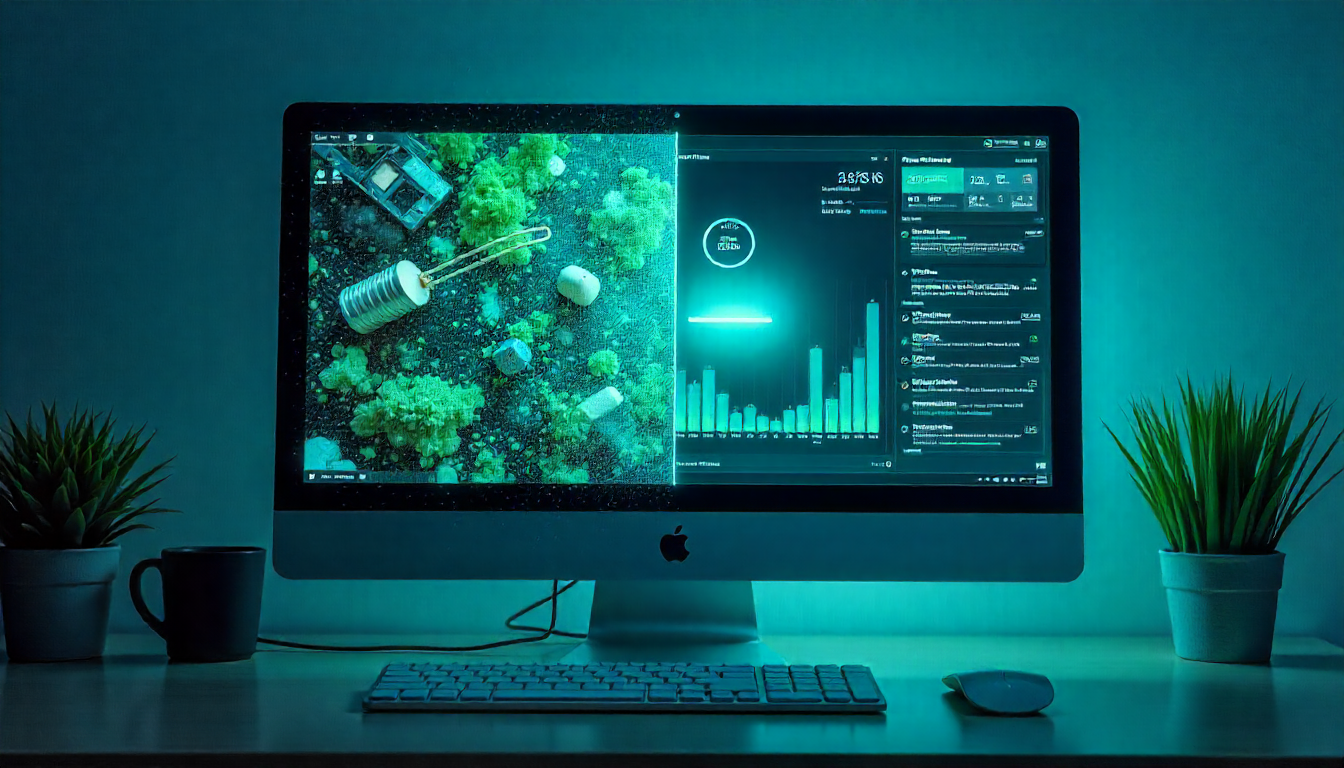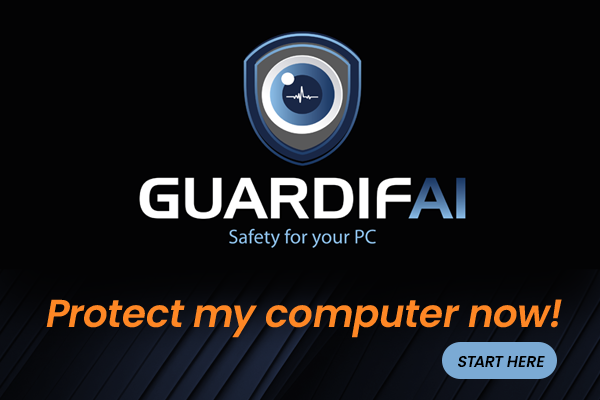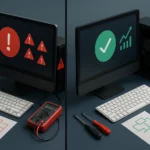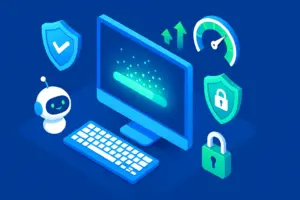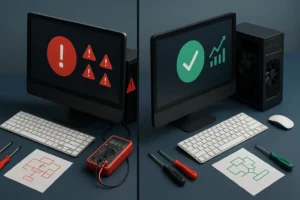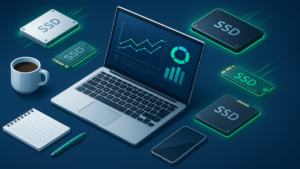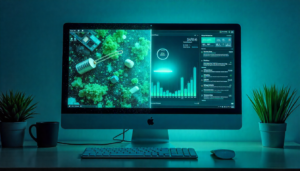Remember when your computer was lightning-fast? When clicking an icon instantly opened your program, and your PC booted up before you could finish your morning coffee? Those were the good old days, right?
Here's the frustrating truth: every computer will slow down over time. But here's the empowering truth: it doesn't have to stay that way.
Today, we're uncovering the real reasons behind your computer's gradual decline and, more importantly, what you can actually do about it. By the end of this article, you'll understand exactly why your once-speedy machine now feels like it's running through molasses.
The Digital Aging Process: It's Not What You Think
Most people believe computers slow down because they're "getting old" – like a car with high mileage. This is only partially true. Unlike physical machines that wear out from use, computers actually slow down from digital clutter and inefficiency, not mechanical wear.
Think of it this way: your computer's hardware doesn't get tired. Your processor doesn't need coffee breaks, and your memory chips don't develop arthritis. So why does everything feel sluggish after a few months or years?
Reason #1: The Software Multiplication Effect
What Happens: Every program you install wants to start automatically when your computer boots up. These "startup programs" accumulate over time like dust bunnies under your bed.
The Real Impact: Imagine trying to read 20 books simultaneously. That's what your computer attempts every time it starts up, dividing its attention between dozens of programs you might use once a month.
The Hidden Culprit: Many programs sneak startup entries without asking. That PDF reader, photo organizer, and gaming software all want priority access to your computer's resources.
Reason #2: The Digital Junk Drawer Syndrome
What Happens: Your computer creates temporary files every day – cache files, log files, update remnants, and installation leftovers. These accumulate like items in a junk drawer you never clean.
The Real Impact: Your hard drive becomes cluttered with thousands of useless files. Windows has to search through this digital mess every time it needs to find something, slowing down every operation.
The Shocking Truth: A typical computer accumulates 2-5 GB of junk files monthly. Over two years, that's potentially 120 GB of digital trash slowing everything down.
Reason #3: Registry Bloat (Windows' Secret Problem)
What Happens: Windows keeps a massive database called the Registry that tracks every program, setting, and hardware change. When you uninstall software, it often leaves Registry entries behind like abandoned houses in a ghost town.
The Real Impact: Windows has to search through thousands of obsolete entries every time it needs to find system information. It's like trying to find a phone number in a phonebook where half the entries are for disconnected numbers.
Why This Matters: Registry bloat is invisible but devastating. You can't see it happening, but it affects every single operation your computer performs.
Reason #4: The Hard Drive Fragmentation Puzzle
What Happens: When your hard drive fills up, Windows starts storing file pieces in scattered locations. Imagine if someone tore up your book and scattered the pages throughout a library – you'd spend more time searching than reading.
The Real Impact: Your hard drive's read/write head has to jump around frantically to piece together files, turning simple file access into a treasure hunt.
The Performance Hit: Fragmented drives can be 200-300% slower than optimized ones. Opening a single large file might require hundreds of separate disk operations.
Reason #5: Malware's Silent Sabotage
What Happens: Malicious software doesn't always announce itself with obvious symptoms. Many infections run silently in the background, using your computer's resources for their own purposes.
The Real Impact: Your computer is essentially doing two jobs – yours and the malware's. Imagine trying to work while someone else uses your desk, your tools, and your brain power simultaneously.
The Stealth Factor: Modern malware is designed to remain undetected while slowly degrading performance. By the time you notice, significant damage may already be done.
Reason #6: Dust and Heat: The Physical Culprits
What Happens: Dust accumulates inside your computer case, blocking fans and coating components. This causes overheating, which forces your processor to slow down to prevent damage.
The Real Impact: An overheated processor automatically reduces its speed to stay safe. It's like your computer putting itself in "safety mode" whenever things get too hot.
The Multiplier Effect: Heat doesn't just slow down your processor – it makes every component work harder, creating a cascade of performance problems.
Reason #7: Outdated Drivers and Software
What Happens: Device drivers (software that helps your computer communicate with hardware) become outdated. Running old drivers with new software creates compatibility conflicts and inefficiencies.
The Real Impact: It's like trying to use a 2010 smartphone with 2024 apps. Everything works, but nothing works well.
The Compound Problem: Each outdated component creates bottlenecks that slow down the entire system, even if other parts are running efficiently.
The Myth of "Computer Years"
Here's what most people don't understand: computer slowdown isn't inevitable aging – it's accumulated neglect. A well-maintained 5-year-old computer can run faster than a neglected 1-year-old machine.
Think about it: smartphones from 2020 still run modern apps smoothly when properly maintained. The hardware hasn't worn out – it's the digital environment that determines performance.
The Traditional Solutions (And Why They're Not Enough)
Most people try to solve slow computer problems with:
- Manual cleanup: Deleting files and uninstalling programs
- Antivirus scans: Running occasional security checks
- Disk defragmentation: Reorganizing file storage
- Registry cleaners: Removing obsolete entries
These solutions work temporarily, but they're reactive rather than proactive. It's like cleaning your house once a year instead of maintaining it daily.
The Modern Approach: Continuous Optimization
Smart computer users are discovering that the best solution isn't periodic cleanup – it's continuous maintenance. Just like your body stays healthier with daily care rather than occasional medical interventions, your computer performs better with ongoing optimization.
Modern AI-powered solutions can:
- Monitor performance in real-time
- Clean junk files automatically
- Optimize startup programs continuously
- Update drivers proactively
- Prevent malware before it installs
- Manage system resources intelligently
The Bottom Line: Prevention vs. Reaction
Your computer doesn't have to slow down. The performance decline you've accepted as "normal" is actually preventable with the right approach.
Instead of waiting for problems to develop and then trying to fix them, proactive users are embracing solutions that maintain peak performance continuously. It's the difference between changing your car's oil regularly versus waiting for the engine to seize up.
Take Control of Your Computer's Performance
Understanding why computers slow down is the first step toward maintaining peak performance. The second step is implementing a maintenance strategy that works automatically, without requiring technical knowledge or constant attention.
Your computer's performance doesn't have to decline over time. With the right tools and approach, your PC can run as smoothly in year three as it did on day one.
Ready to experience what continuous PC optimization feels like? Discover how GuardifAI's intelligent monitoring keeps computers running at peak performance automatically, preventing slowdowns before they start. Try it free and see the difference proactive care makes.

